West Lawrencetown is a residential community within the Halifax Regional Municipality Nova Scotia on the Eastern Shore on Route 207 along the scenic route Marine Drive.
West Lawrencetown is a residential community within the Halifax Regional Municipality Nova Scotia on the Eastern Shore on Route 207 along the scenic route Marine Drive.
Despite the British Conquest of Acadia in 1710, Nova Scotia remained primarily occupied by Catholic Acadians and Mi'kmaq. Father Le Loutre's War began when Edward Cornwallis arrived to establish Halifax with 13 transports on June 21, 1749. [1] By unilaterally establishing Halifax the British were violating earlier treaties with the Mi'kmaq (1726), which were signed after Dummer's War. [2] The British quickly began to build other settlements. To guard against Mi'kmaq, Acadian and French attacks on the new Protestant settlements, British fortifications were erected in Halifax (1749), Dartmouth (1750), Bedford (Fort Sackville) (1751), Lunenburg (1753) and Lawrencetown (1754).
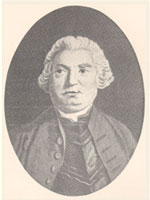
In 1754, Nova Scotia's Lieutenant Governor Charles Lawrence, mindful of the threat the French posed at Fortress Louisbourg on Cape Breton Island, of the intentions of the Mi'kmaq and the Acadians, offered land grants to twenty families, who referred to their settlement as Lawrence's Town, which became Lawrencetown.
Situated approximately 24 km east of Halifax Harbour, West Lawrencetown is located on a peninsula in the Atlantic Ocean formed by Cole Harbour to the west and Lawrencetown Lake (a natural harbour) to the east. The community of Upper Lawrencetown is located northwest along the Highway 107 corridor and the coastal community of Lawrencetown is to the southeast where Lawrencetown Beach Provincial Park is situated.
The area has a unique micro climate as a result of the shallow waters of Cole Harbour and Lawrencetown Lake which are heated by the daytime sun and retained by an abandoned railway embankment constructed across the waterway which acts as a barrier to tidal exchange. As a result, West Lawrencetown experiences fewer fog days compared to other areas along the Eastern Shore.
West Lawrencetown is also the home of three beaches. Lawrencetown Beach, a south-facing stretch of sand that unfurls lazily for nearly 1.5 km (1 mi), is renowned as a prime destination for local and international surfers, located along Route 207, twenty-five miles from the hustle and cosmopolitan bustle of downtown Halifax. The second beach is Conrad's Beach located at the end of Conrad Road. Stoney Beach is located on the 207 west of Lawrencetown Beach.
Lawrencetown Beach is a provincial park and was one of the first beaches in the province to be supervised by the Nova Scotia Lifeguard Service who have been on duty there since 1973.

Bedford is a community of the Halifax Regional Municipality, in Nova Scotia, Canada.
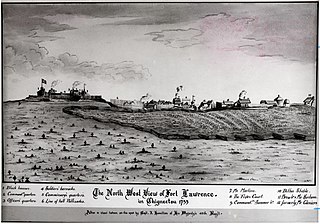
Fort Lawrence was a British fort built during Father Le Loutre's War and located on the Isthmus of Chignecto.

Fort Gaspareaux was a French fort at the head of Baie Verte near the mouth of the Gaspareaux River and just southeast of the modern village of Port Elgin, New Brunswick, Canada, on the Isthmus of Chignecto. It was built during Father Le Loutre's War and is now a National Historic Site of Canada overlooking the Northumberland Strait.

Fort Edward is a National Historic Site of Canada in Windsor, Nova Scotia, and was built during Father Le Loutre's War (1749-1755). The British built the fort to help prevent the Acadian Exodus from the region. The Fort is most famous for the role it played both in the Expulsion of the Acadians (1755) and in protecting Halifax, Nova Scotia from a land assault in the American Revolution. While much of Fort Edward has been destroyed, including the officers' quarters and barracks, the blockhouse that remains is the oldest extant in North America. A cairn was later added to the site.
Dartmouth founded in 1750, is a Metropolitan Area and former city in the Canadian province of Nova Scotia.

Lawrencetown is a Canadian rural community in the Halifax Regional Municipality in Nova Scotia, Canada. The settlement was established during the eve of Father Le Loutre's War and at the beginning of the French and Indian War.
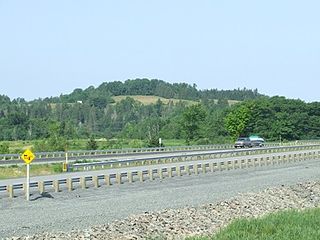
The Battle at St. Croix was fought during Father Le Loutre's War between Gorham's Rangers and Mi'kmaq at Battle Hill in the community of St. Croix, Nova Scotia. The battle lasted from March 20–23, 1750.

The Raid on Dartmouth occurred during Father Le Loutre's War on May 13, 1751, when a Miꞌkmaq and Acadian militia from Chignecto, under the command of Acadian Joseph Broussard, raided Dartmouth, Nova Scotia, destroying the town and killing twenty British villagers and wounding British regulars. The town was protected by a blockhouse on Blockhouse Hill with William Clapham's Rangers and British regulars from the 45th Regiment of Foot. This raid was one of seven the Natives and Acadians would conduct against the town during the war.

The siege of Grand Pré happened during Father Le Loutre's War and was fought between the British and the Wabanaki Confederacy and Acadian militia. The siege happened at Fort Vieux Logis, Grand-Pré. The native and Acadia militia laid siege to Fort Vieux Logis for a week in November 1749. One historian states that the intent of the siege was to help facilitate the Acadian Exodus from the region.
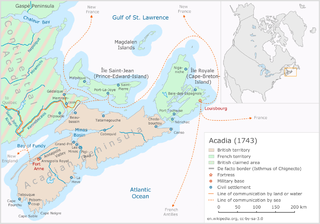
Father Le Loutre's War (1749–1755), also known as the Indian War, the Mi'kmaq War and the Anglo-Mi'kmaq War, took place between King George's War and the French and Indian War in Acadia and Nova Scotia. On one side of the conflict, the British and New England colonists were led by British officer Charles Lawrence and New England Ranger John Gorham. On the other side, Father Jean-Louis Le Loutre led the Mi'kmaq and the Acadia militia in guerrilla warfare against settlers and British forces. At the outbreak of the war there were an estimated 2500 Mi'kmaq and 12,000 Acadians in the region.

The Acadian Exodus happened during Father Le Loutre's War (1749–1755) and involved almost half of the total Acadian population of Nova Scotia deciding to relocate to French controlled territories. The three primary destinations were: the west side of the Mesagoueche River in the Chignecto region, Isle Saint-Jean and Île-Royale. The leader of the Exodus was Father Jean-Louis Le Loutre, whom the British gave the code name "Moses". Le Loutre acted in conjunction with Governor of New France Roland-Michel Barrin de La Galissonière who encouraged the Acadian migration. A prominent Acadian who transported Acadians to Ile St. Jean and Ile Royal was Joseph-Nicolas Gautier. The overall upheaval of the early 1750s in Nova Scotia was unprecedented. Present-day Atlantic Canada witnessed more population movements, more fortification construction, and more troop allocations than ever before in the region. The greatest immigration of the Acadians between 1749 and 1755 took place in 1750. Primarily due to natural disasters and British raids, the Exodus proved to be unsustainable when Acadians tried to develop communities in the French territories.

Fort Vieux Logis was a small British frontier fort built at present-day Hortonville, Nova Scotia, Canada in 1749, during Father Le Loutre's War (1749). Ranger John Gorham moved a blockhouse he erected in Annapolis Royal in 1744 to the site of Vieux Logis. The fort was in use until 1754. The British rebuilt the fort again during the French and Indian War and named it Fort Montague (1760).

Fort Menagoueche was a French fort at the mouth of the St. John River, New Brunswick, Canada. French Officer Charles Deschamps de Boishébert et de Raffetot and Ignace-Philippe Aubert de Gaspé built the fort during Father Le Loutre's War and eventually burned it themselves as the French retreated after losing the Battle of Beausejour. It was reconstructed as Fort Frederick by the British.

The Battle at Chignecto happened during Father Le Loutre's War when Charles Lawrence, in command of the 45th Regiment of Foot and the 47th Regiment, John Gorham in command of the Rangers and Captain John Rous in command of the navy, fought against the French monarchists at Chignecto. This battle was the first attempt by the British to occupy the head of the Bay of Fundy since the disastrous Battle of Grand Pré three years earlier. They fought against a militia made up of Mi'kmaq and Acadians led by Jean-Louis Le Loutre and Joseph Broussard (Beausoliel). The battle happened at Isthmus of Chignecto, Nova Scotia on 3 September 1750.

The Raid on Dartmouth (1749) occurred during Father Le Loutre's War on September 30, 1749 when a Mi'kmaw militia from Chignecto raided Major Ezekiel Gilman's sawmill at present-day Dartmouth, Nova Scotia, killing four workers and wounding two. This raid was one of seven the Wabanaki Confederacy and Acadians would conduct against the settlement during the war.

The attack at Mocodome was a battle which occurred during Father Le Loutre's War in present-day Country Harbour, Nova Scotia on February 21, 1753 which saw two British mariners and six Mi'kmaq killed. The battle ended any hope for the survival of the Treaty of 1752 signed by Governor Peregrine Hopson and Mi'kmaq chief Jean-Baptiste Cope.

Nova Scotia is a Canadian province located in Canada's Maritimes. The region was initially occupied by Mi'kmaq. The colonial history of Nova Scotia includes the present-day Canadian Maritime provinces and the northern part of Maine, all of which were at one time part of Nova Scotia. In 1763 Cape Breton Island and St. John's Island became part of Nova Scotia. In 1769, St. John's Island became a separate colony. Nova Scotia included present-day New Brunswick until that province was established in 1784. During the first 150 years of European settlement, the colony was primarily made up of Catholic Acadians, Maliseet and Mi'kmaq. During the latter seventy-five years of this time period, there were six colonial wars that took place in Nova Scotia. After agreeing to several peace treaties, this long period of warfare ended with the Halifax Treaties (1761) and two years later when the British defeated the French in North America (1763). During these wars, Acadians, Mi'kmaq and Maliseet from the region fought to protect the border of Acadia from New England. They fought the war on two fronts: the southern border of Acadia, which New France defined as the Kennebec River in southern Maine. The other front was in Nova Scotia and involved preventing New Englanders from taking the capital of Acadia, Port Royal, establishing themselves at Canso.
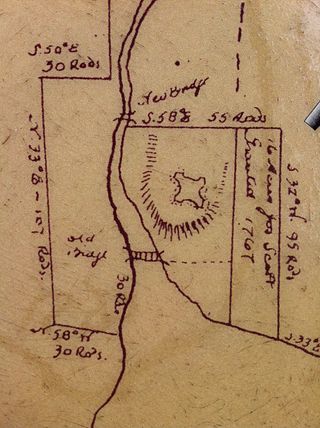
Fort Sackville was a British fort in present-day Bedford, Nova Scotia. It was built during Father Le Loutre's War by British adjacent to present-day Scott Manor House, on a hill overlooking the Sackville River to help prevent French, Acadian and Mi'kmaq attacks on Halifax. The fort consisted of a blockhouse, a guard house, a barracks that housed 50 soldiers, and outbuildings, all encompassed by a palisade. Not far from the fort was a rifle range. The fort was named after George Germain, 1st Viscount Sackville.

The military history of the Mi'kmaq consisted primarily of Mi'kmaq warriors (smáknisk) who participated in wars against the English independently as well as in coordination with the Acadian militia and French royal forces. The Mi'kmaq militias remained an effective force for over 75 years before the Halifax Treaties were signed (1760–1761). In the nineteenth century, the Mi'kmaq "boasted" that, in their contest with the British, the Mi'kmaq "killed more men than they lost". In 1753, Charles Morris stated that the Mi'kmaq have the advantage of "no settlement or place of abode, but wandering from place to place in unknown and, therefore, inaccessible woods, is so great that it has hitherto rendered all attempts to surprise them ineffectual". Leadership on both sides of the conflict employed standard colonial warfare, which included scalping non-combatants. After some engagements against the British during the American Revolutionary War, the militias were dormant throughout the nineteenth century, while the Mi'kmaq people used diplomatic efforts to have the local authorities honour the treaties. After confederation, Mi'kmaq warriors eventually joined Canada's war efforts in World War I and World War II. The most well-known colonial leaders of these militias were Chief (Sakamaw) Jean-Baptiste Cope and Chief Étienne Bâtard.

The Lunenburg campaign was executed by the Mi'kmaq militia and Acadian militia against the Foreign Protestants who the British had settled on the Lunenburg Peninsula during the French and Indian War. The British deployed Joseph Gorham and his Rangers along with Captain Rudolf Faesch and regular troops of the 60th Regiment of Foot to defend Lunenburg. The campaign was so successful, by November 1758, the members of the House of Assembly for Lunenburg stated "they received no benefit from His Majesty's Troops or Rangers" and required more protection.
Texts
Links